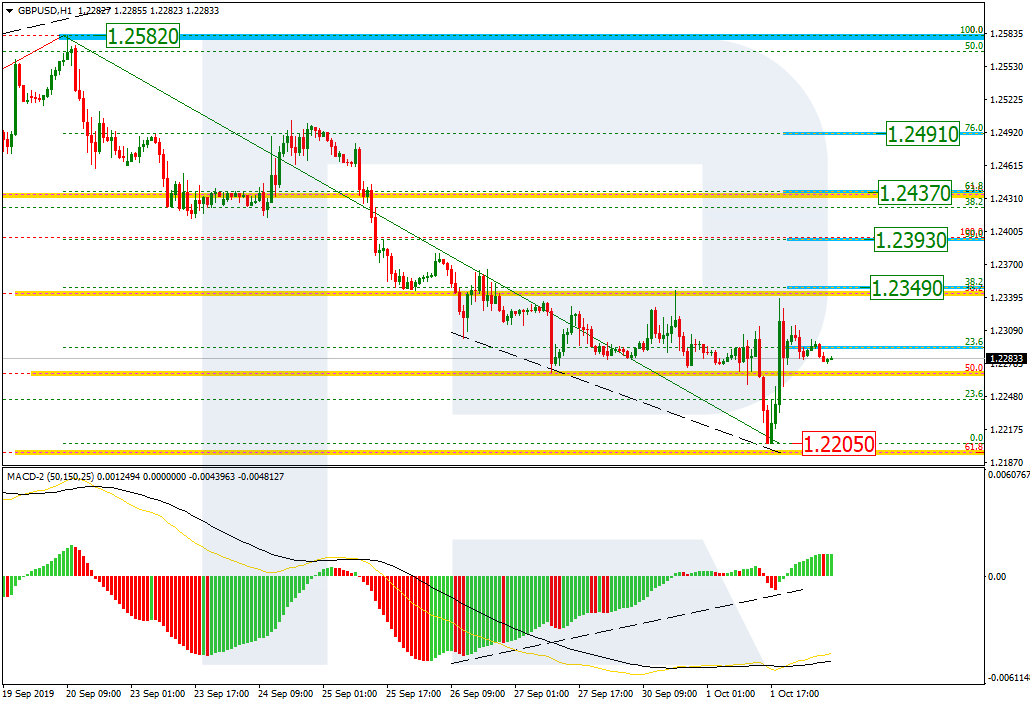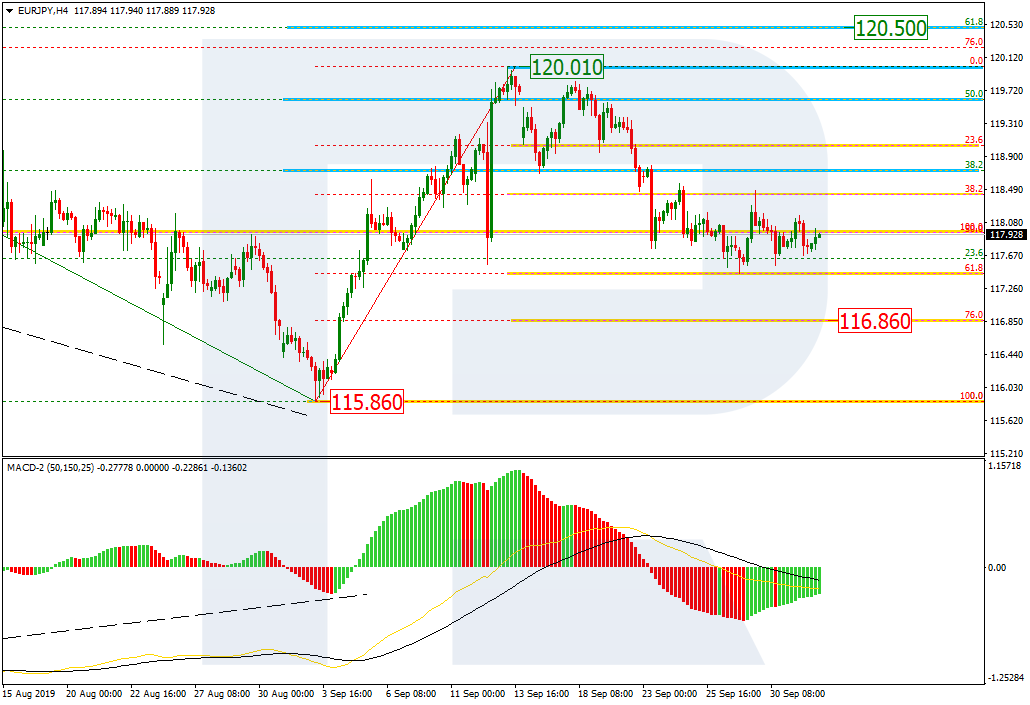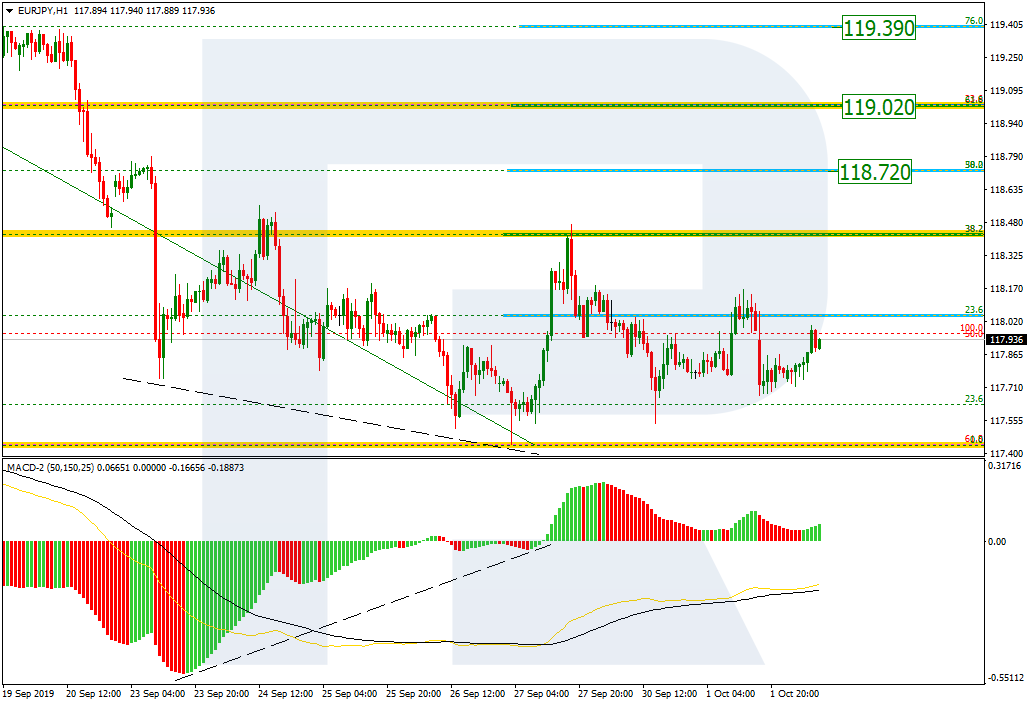GBPUSD, “Great Britain Pound vs US Dollar”
As we can see in the H4 chart, GBPUSD has almost reached a very significant correctional level, 61.8% fibo at 1.2197. If the pair is able to reach the next short-term correctional level, 76.0% fibo at 1.2108, it may try to test the low at 1.1958 and once again enter the post-correctional extension area between 138.2% and 161.8% fibo at 1.2019 and 1.1788 respectively. However, in case of a new rising impulse, the targets will be the high at 1.2582 and then 61.8% fibo at 1.2710.


In the H1 chart, the convergence made the pair start a new correction. The rising impulse tried to reach 38.2% fibo at 1.2349, but was forced to pull back. The next rising impulse may reach the above-mentioned level and then continue growing towards 50.0%, 61.8%, and 76.0% fibo 1.2393, 1.2437, and 1.2491 respectively. The key support is the low at 1.2205.


EURJPY, “Euro vs. Japanese Yen”
As we can see in the H4 chart, after slowing down its decline at 61.8% fibo, EURJPY has formed a triangle consolidation range, which means that the pair is about to start a new rising wave. The key upside target may be the high at 120.01 and 61.8% fibo at 120.50. However, one shouldn’t exclude a possibility of further decline towards 76.0% fibo at 116.86 in the short-term. In this case, the instrument may later fall to reach the low at 115.86 or even deeper.


In the H1 chart, the price started a new short-term correction, which has already reached 38.2% fibo. The next correctional wave may be heading towards 50.0%, 61.8%, and 76.0% fibo at 118.72, 119.02, and 119.39 respectively.

